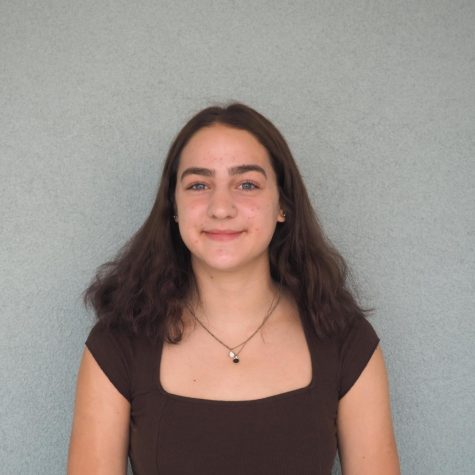Almost nine months after schools shut down in March, the COVID-19 pandemic has upended nearly every aspect of teenagers’ lives. Education and day-to-day life have been relegated to the virtual sidelines while opportunities for face-to-face socialization with friends have plummeted after the issuance of shelter-in-place orders. The reasoning behind such changes is clear: after all, to reduce the spread and transmission of the coronavirus, adhering to strict social distancing guidelines and wearing a mask is an absolute must.
Yet, at the same time, physical safety has come at the cost of mental wellbeing, as child psychologist Dr. Wendy Froehlich recognizes. “I’d love to say that safety is the top priority, but you can break safety down to include physical safety and mental health safety,” Froehlich said. “And we have competing interests right now within those two areas.”
“
I’d love to say that safety is the top priority, but you can break safety down to include physical safety and mental health safety, and we have competing interests right now within those two areas.
— Child Psychologist Dr. Wendy Froehlich
Froehlich’s words point at the deeper issue of maintaining a careful balancing act between mental health and physical health amidst the pandemic. According to a recent Harvard study, strict lockdowns and curfews have led to widespread feelings of isolation, causing children to experience symptoms of depression, anxiety and misbehavior. Similarly, the Journal of the American Medical Association reported significantly higher levels of depression and anxiety in students who had been quarantined for 30 days due to COVID-19.
In short, the spread of the COVID-19 pandemic has led to a far more invisible mental health pandemic, especially amongst adolescents and teens. “Without a doubt, the pandemic has been hard for a large majority of individuals I work with,” Froehlich said. “From a general social perspective, [since] high school teenagers are at such a transitional period in life, it’s been really, really difficult to live through this pandemic.”
New Challenges
At Gunn, things are no different. According to counselor David Leftwich, since Gunn shifted to virtual learning, there have been an increased number of meetings arranged for students requiring interventions to support them academically. Leftwich noted that student anxiety has been an underlying theme in all of these meetings. “I think that those meetings have anxiety underneath them, where [students are] saying, ‘I don’t know if I can do this, I need some help. I’m worried about getting through all this. It feels so different. It feels so scary,’” Leftwich said.
Mental Health and Wellness Coordinator Genavae Dixon noted a similar trend, citing the fact that there have been more students reaching out for support. “We definitely have more students reporting about depressive-like symptoms than we have had before,” Dixon said. “Especially for students having these situations happen for the first time, [I hear them saying] ‘wow, it’s really hard for me to get out of bed, it’s really hard for me to have some level of motivation and to finish my schoolwork, or to even interact with my family or text my friends back.’”
Teacher-student relationships have also felt more distanced. According to Leftwich, it’s considerably more challenging for adults to detect when a student is struggling in a virtual schooling format. “[Counselors] get a lot of our referrals through teachers,” he said. “In the classroom, they can look out over the class and they can see when a student has their head down. But online, students just have their camera off, so it wouldn’t be a red flag for that teacher.”
Even when students meet with counselors, it has become harder for counselors to fully understand a student’s mental state. “On campus, it’s easier to get a feel for a student,” Leftwich said. “When I talk to a student, I’m reading their body language in a different way than I do when I do a Zoom meeting with them. I can hear their voice differently, or they speak differently to me in my office than they do when they’re in their living room. Understanding the mental health challenges of students on campus is easier when you’re on campus and meeting with students face to face.”
“
When I talk to a student, I’m reading their body language in a different way than I do when I do a Zoom meeting with them. Understanding the mental health challenges of students on campus is easier when you’re on campus and meeting with students face to face.
— Gunn Counselor David Leftwich
For its part, Gunn has recognized the need to take steps in supporting the mental wellbeing of students inside and outside the classroom. Since on-campus support is no longer available, new virtual support systems are being developed and offered to students.
The Wellness Center staff, for instance, has been coming up with different online initiatives to provide support for students in a variety of different ways. There is now a Bitmoji classroom where students can drop in 24 hours a day to get different types of resources. Students can also receive direct assistance during school hours from wellness professionals (These resources can be accessed at tinyurl.com/gwellness). These new resources have helped some students adjust to online learning; according to Reach Out, Care, Know (ROCK) President Kate Williams, who is a senior, school-led activities have helped her feel more comfortable in the online environment. “I think Gunn has really helped us by using the Gunn Together times and the SELF times to really talk about mental health,” she said. “I feel so supported, especially by [Wellness Outreach Worker Rossana Castil], who is really helping by posting things on Schoology—ways that you can continue to work on your mental health.”
A Reason To Reopen
Given the challenges distance learning poses to maintaining wellness, it’s no surprise students’ mental health has been cited as a reason for reopening schools to resume in-person instruction. The Palo Alto Unified School District (PAUSD) school board has strongly encouraged reopening and unanimously approved reopening plans for both elementary and secondary schools. Chief among the reasons for reopening, according to PAUSD Superintendent Dr. Don Austin, is mental health. “Students have been isolated for nine months, and are starting to have issues,” he said. “When you get to be around people that you know care about you, your mental health improves naturally, and that’s my belief system. I think the board is, as a whole, pretty aligned with that.”
School Board Member Jennifer DiBrienza echoed Austin. “I know a lot of students that are doing absolutely fine academically, but some are depressed or are just disengaged,” DiBrienza said. “There are some kids that we know of who are struggling with isolation. I think that there’s a disappointment of not being able to open in January [given the] real academic concerns and mental health concerns.”
“
I know a lot of students that are doing absolutely fine academically, but some are depressed or are just disengaged. I think that there’s a disappointment of not being able to open in January [given the] real academic concerns and mental health concerns.
— School Board Member Jennifer DiBrienza
Under the PAUSD reopening plan, students would only return in-person for their English and social studies classes, leading Dixon to voice uncertainty on whether the plan would effectively support students. “I think that for our students that truly need the structure of school to be able to get their work done, that it would be helpful,” she said. “But, overall, it would still be that most of your classes would still be in distance, so there still would be some discrepancies and some issues around that.”
While PAUSD’s secondary school plan has been shelved due to the county’s spiking COVID-19 case count, if students do go back to school in the near-future, Dixon worries about potentially new forms of student anxiety. “I think it does add or it brings in a level of health anxiety,” she said. “‘Now I’m coming to school, is everybody taking their precautions? Is everyone wearing their masks? How do I interact?’ My colleagues that I work within other [reopened] schools say that has been a big point of stress for students.”
At the end of the day, there’s no right answer in what to prioritize when reopening schools, according to Froehlich. “I don’t know that there’s a way to say that there’s just one most important variable to be looked at [in reopening],” she said. “I think there are a multitude of variables that have to be weighed, and the challenging part is they’re probably different for each individual and each family. That’s where this creates such a challenging situation because there is no great one-size-fits-all.”
In looking toward the future, regardless of how reopenings will look, Dixon emphasized reaching out for support. “Reach out to Wellness [staff]—we are here to support you,” she said. “We want to be here to support you with those things and talk through strategies and be really individualized with our support for our students.”



